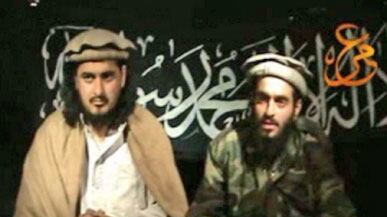The attack was one of the deadliest on a CIA outpost on foreign soil. With the use of an undercover agent, al Qaeda struck inside a U.S. military base in Afghanistan, killing seven CIA officers and a Jordanian intelligence officer.
But the story of the attack in Khost isn't over. A year later, U.S. intelligence agencies are still piecing together the portrait of the attacker to home in on who we are fighting in Afghanistan, and how best to conduct that fight.

The story begins in early 2009, when a Jordanian, using the nom de guerre Abu Dujana al Khorasani, persuaded the Jordanian General Intelligence Department that he would be a double agent for them against al Qaeda. Khorasani's real name was Humam Khalil Abu Mulal al Balawi—a man who had worked as the propaganda specialist for al Qaeda in Iraq, the group led by Abu Musaib al Zarqawi. According to what his wife later told journalists in Jordan, Balawi had been deeply affected by Operation Cast Lead, Israel's military campaign in Gaza during the winter of 2008-2009, and had tried to go to Gaza from Jordan to join Hamas. Unable to get to Gaza, Balawi set out on a new mission: to infiltrate the Jordanian intelligence agency, which he saw as a tool of U.S. and Israeli interests in the region, making his way from Jordan to Pakistan, and telling the Jordanians that he had information on the whereabouts of al Qaeda's No. 2, Ayman Zawahiri. In reality, however, Balawi was a triple agent, still working for al Qaeda.
In reality, Balawi was a triple agent, still working for al Qaeda.
Having successfully deceived both Jordanian and American agents, Balawi traveled onward from Pakistan into neighboring Afghanistan, where, on December 30, he managed to get inside the CIA's camp in Khost without being searched. Once inside the base that supported the agency's remote-controlled drones, which patrol the border between the two countries, he detonated the explosives he had hidden on his body, blowing up the base and killing not only the Americans but also a Jordanian man named Abu Zaid—his case officer.
Surpassed only by the Hezbollah attack on the American embassy in Beirut in 1983 that killed eight CIA officers, it was the worst attack in the history of the CIA. (Today, the dead officers of Khost are each memorialized with a star on the wall at the main entrance to agency headquarters in Virginia, alongside the 120 other agents who have died in the line of duty. In Jordan, Abu Said was given a state funeral.)
Al Qaeda quickly took credit for the attack, which the group said was dedicated to the memory of the Pakistan Taliban leader, Baytullah Mehsud, who had been killed in a U.S. drone attack on August 6, 2009. And it didn't take long before a martyr video appeared online.
In early 2010 Mehsud's successor and clansman, Hakimullah Mehsud, appeared in a videotape with Balawi in which he described his plans to bomb the CIA base and revealed that the Jordanian officer had been fooled by al Qaeda's counterintelligence skills. In the video, Balawi says his mission has been planned by the Shura council of al Qaeda—meaning bin Laden himself. He describes how he lured the Jordanians into trusting him, and how he got access to Jordanian intelligence headquarters in Amman, which he describes in detail. Taunting the Jordanians for failing to uncover his plot, Balawi even claims that Jordanian agents told him they were responsible for killing Osama bin Laden's first mentor, a Palestinian jihadist named Abdullah Azzam, who died in a car bomb in 1989 in Pakistan.
At the end of the video, he bids his family goodbye before going on his mission to kill. (The deadly and much-feared Haqqani network—a Taliban-affiliated group operating on the Afghan-Pakistan border—later put out a statement claiming that they had had a hand in the attack by helping Balawi get to his target.)
Today, the attack has become a symbol of the complicated—and deadly—threat that Americans face in Afghanistan. It also illustrates the perils of penetrating al Qaeda networks in Afghanistan and Pakistan. But without human intelligence on the ground, the networks remain opaque and ghost-like to U.S. intelligence, making it all but impossible to operate the drones, which have become a mainstay in the battle against insurgents in the region.
With high-quality intelligence, drones are devastating platforms for disrupting al Qaeda. (In the year since the Khost attack, they have attacked al Qaeda groups more relentlessly than ever, killing several of those involved in the plot including the Yemeni bombmaker and even affecting Zawahiri's propaganda operations by severely reducing the number of audio and video messages he has appeared in.) However, without the collectors across the border in Khost and other forward operating bases, or information from friendly intelligence services like the Jordanians, the drones are just fancy model airplanes.
The battle against al Qaeda, and the syndicate of terrorist groups allied with it, is first and foremost about good intelligence and learning who our enemy is. In what is now our longest war, the sacrifice made a year ago by the American and Jordanian intelligence officers at Khost should be remembered.
Bruce Riedel, a former long-time CIA officer, is a senior fellow in the Saban Center at the Brookings Institution. At Obama's request, he chaired the strategic review of policy toward Afghanistan and Pakistan in 2009. He's also the author of The Search for Al Qaeda: Its Leadership, Ideology and Future.






